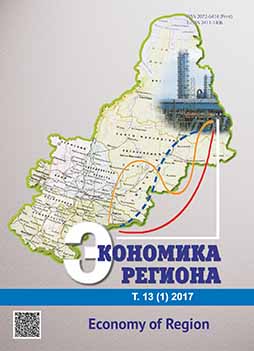Regional Differences in Equivalence Scales in Turkey
Regional Differences in Equivalence Scales in Turkey
Author(s): Gianni Betti, Mehmet Ali Karadag, Ozlem Sarica, Baris UcarSubject(s): Economy, Geography, Regional studies
Published by: Институт экономики Уральского отделения Российской академии наук
Keywords: equivalence scales; child costs; regional equivalence scales; Engel curve; regional differences; almost ideal demand system; poverty measurement; poverty indicators; Turkey; HBS; NUTS;
Summary/Abstract: Equivalence scales have a crucial role in poverty measurement. For Turkey, there are no available up-todate equivalence scales, representing Turkish data. There were no efforts for calculation of equivalence scales at the regional level. The aim of the paper is to calculate and propose an equivalence scale for Turkey and estimate regional differences. Besides the models with Engel method, different equivalence scales were estimated by Almost Ideal Demand System. The results of the first model of AIDS approach composed of 5 age groups, is proposed for Turkey, but for simplicity the results of the second AIDS model could be used as well. In this model, the equivalence scale for Turkey is calculated as 0.65 for each additional adult after the first one and 0.35 for each child. For regional equivalence scales, we use two methods and comare the results. In the first one, regressions were run for each region separately and in the second one, dummy variables introduced. The highest difference in the results of the two methods was observed in Istanbul region. The findings for the regional scales are less reliable as the household size is bigger. This limitation is due to the relatively small size of the data sets. Having surveys with higher sample sizes would enable better results. After getting the results some conclusions could be drawn especially with regard to child cost differences among regions. It was expected to have higher costs for children in poorer regions and the regional results have confirmed this hypothesis.
Journal: Экономика региона
- Issue Year: 13/2017
- Issue No: 1
- Page Range: 63-69
- Page Count: 7
- Language: English

